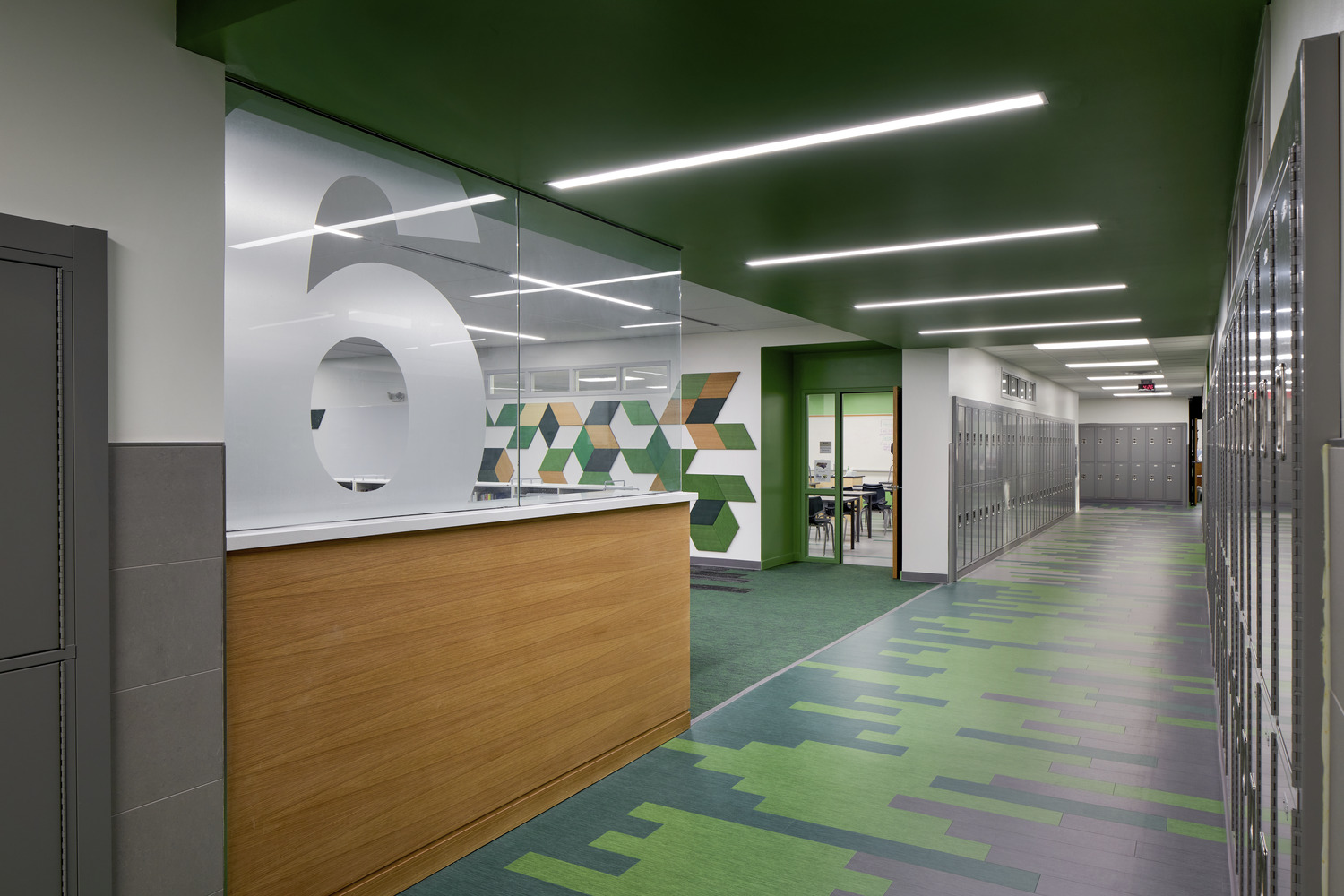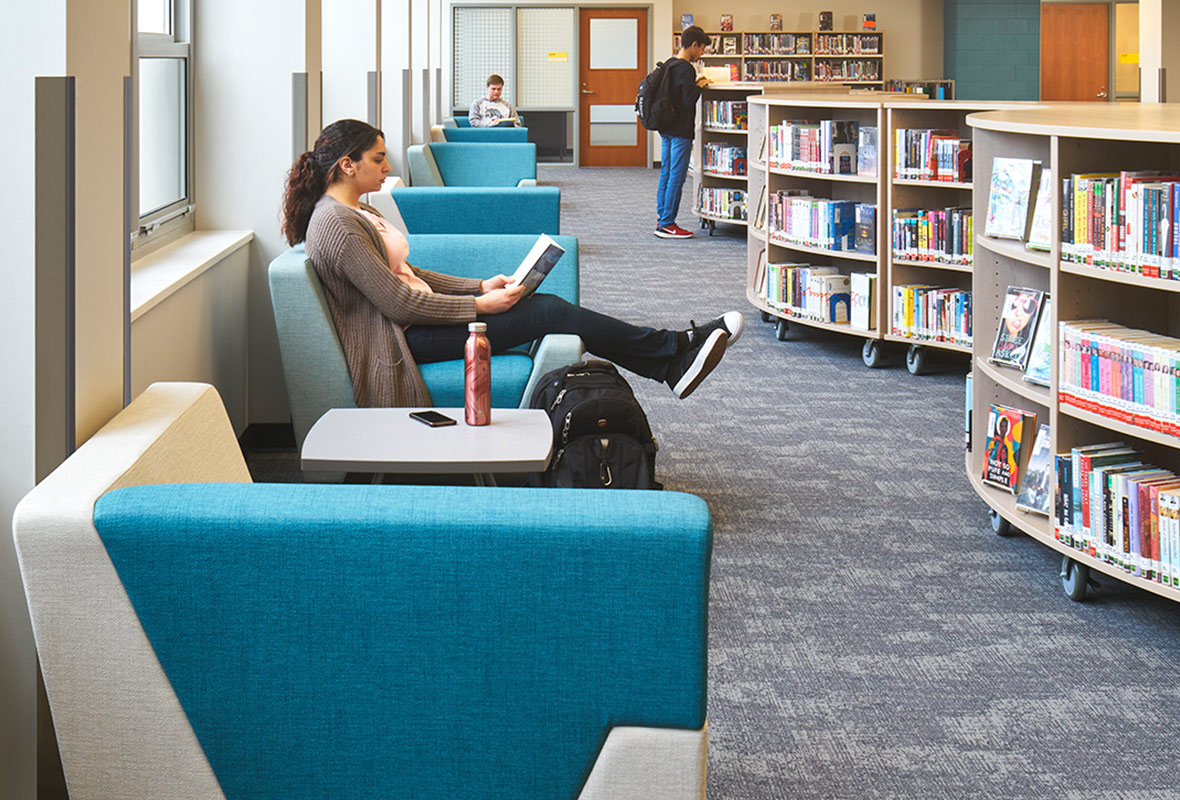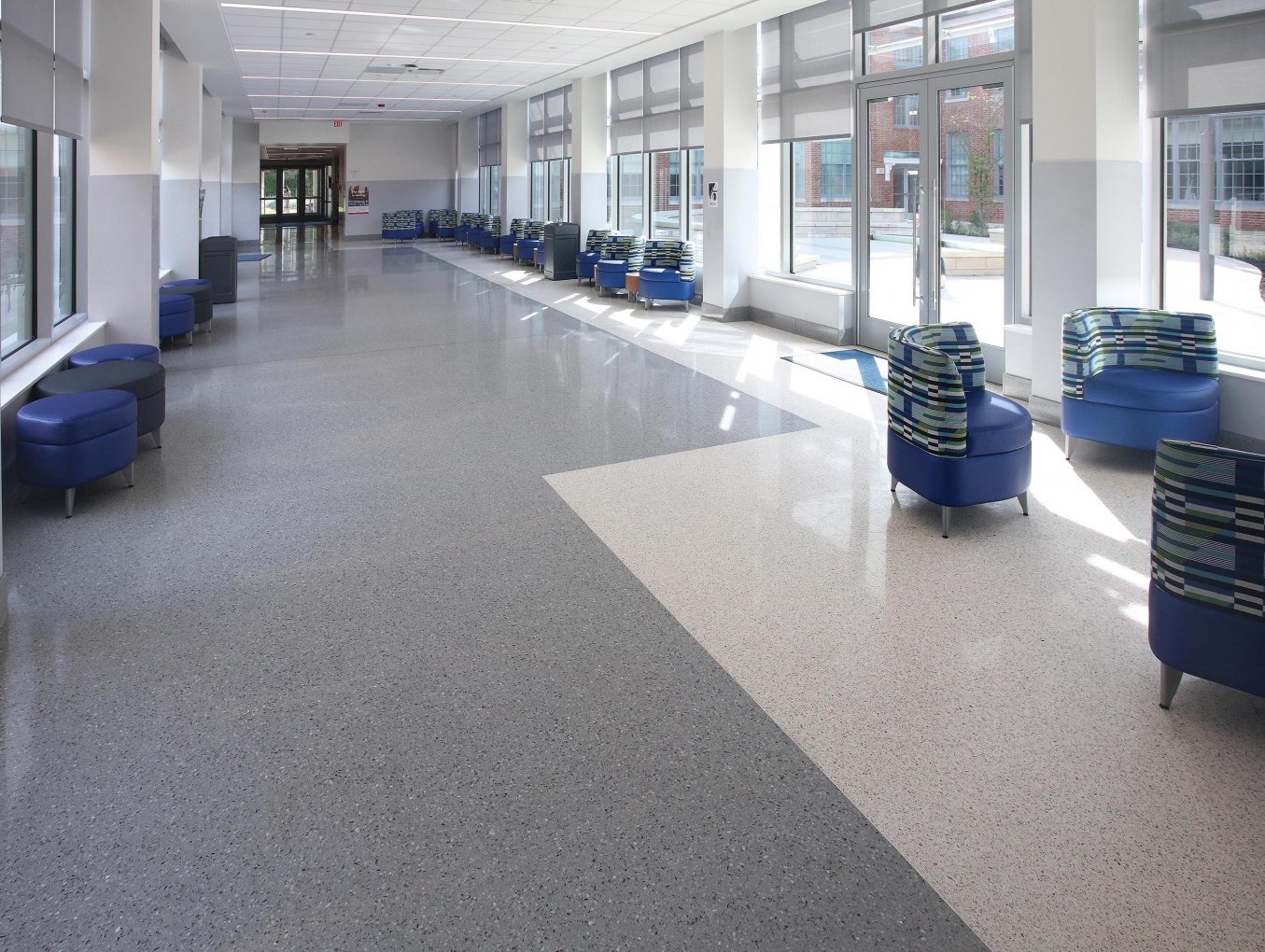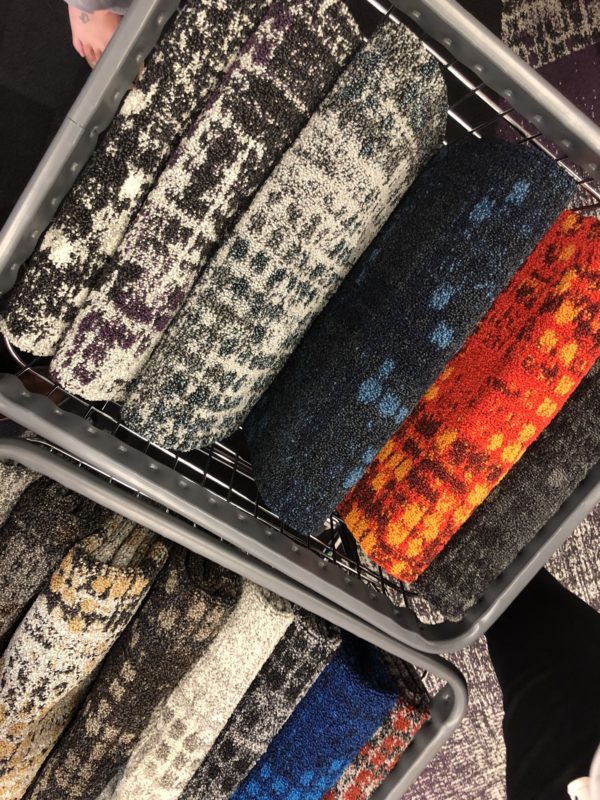When it comes to flooring for your school, how do you make the right choice?
Let’s be honest. Out of all the finish materials that go into a school, the most performance is expected out of flooring. It has to hold up to high foot traffic, but be easy to maintain. It needs to be beautiful, even reflecting a school’s branding, and stain resistant, which is a challenge given that even middle schoolers now drink coffee. On top of this, the product must be affordable. All of these concerns make it difficult to select flooring among the ever changing options.
The design professionals at BVH constantly research flooring options and take many factors into consideration when recommending the best flooring type for a new school or renovation project: durability, maintenance, design options, sustainability and price. Following is not an exhaustive list of flooring options, but excellent choices to keep in mind.
Epoxy Terrazzo
Source: ncterrazzo.com
Many BVH projects involve historic buildings, and it doesn’t take a scientific study to recognize that terrazzo stands the test of time. Schools built over fifty years ago have terrazzo corridors that can be polished to near newness. While historic buildings used cementitious terrazzo, new installations are typically epoxy terrazzo. The epoxy products are thinner (¼ to ⅜”), can be installed over a new or existing concrete slab and polished the day after they are poured. It is possible to match the epoxy base to school colors, and create intricate designs with the metal dividers. Maintenance is easy and low-cost, involving only dusting, mopping and occasional re-sealing. The greatest deterrent to using epoxy terrazzo is the upfront cost, but over its life cycle it is an excellent investment for a school.
Rubber Flooring

Source: nora.com
Rubber flooring is often reserved for stairwells, but is an excellent option for corridors as well. Tiles or rolls in a variety of color options are available. Made from a renewable resource, newly laid rubber flooring is considered sustainable and is recyclable at the end of its usefulness. It has better cushioning, slip-resistance and sound absorption than terrazzo or concrete. The maintenance protocol is simple–vacuuming, mopping and periodic auto-scrubbing, but must be done regularly to avoid a dingy appearance. Schools can expect at least 20 years of performance from rubber flooring. Like epoxy terrazzo, it is more expensive than products such as VCT or LVT but is longer lasting and better performing.
Concrete

Nebraska Center for Advanced Professional Studies
Concrete is becoming increasingly popular for corridors in modern schools. There is a misconception that it is an inexpensive, maintenance-free option, though. Polished concrete is costly due to the additional labor involved and sealed concrete requires regular re-sealing. It can cause acoustical issues, is prone to cracking and is hard under foot. Given all these ‘cons’ you may wonder why anyone opts for it. All things considered, concrete is extremely durable, is already a part of the project and requires little day-to-day maintenance. For a modern aesthetic, there are few products that match its natural beauty.
Vinyl
 Gerald W. Kirn Middle School
Gerald W. Kirn Middle School
Luxury Vinyl Tile (LVT) has become the go-to replacement for Vinyl Composition Tile (VCT). It is inexpensive and easier to maintain than VCT, given that it does not require any sealers or buffing. It is typically manufactured in planks or square tiles, so if a tile is scratched or damaged, a single tile can be replaced. Recent advances in digital printing have increased the number of patterns and colors available–even making custom options possible. The downside of the product is that it is not sustainable and has a significantly shorter lifespan. The product allows a school to get a new floor at a great price, but a plan for replacement should be considered in seven to ten years.
Textile Composite Flooring
 Source: jjflooringgroup.com
Source: jjflooringgroup.com
A newer product option for schools is Textile Composite Flooring. One example is the Kinetex brand from J & J Flooring. It is a cross between LVT and carpet–imagine carpet without any pile. The ‘pros’ for this product are considerable: durable, easy to maintain, slip-resistant, sound-absorbing and sustainable (made from plastic water bottles). It prices out similarly to LVT, but is easier to maintain. Also, it can be used in classrooms as well as corridors, giving the space seamless transitions. Because it is a newer product, the design options are somewhat limited, but that will likely change as it grows in popularity.
Whether you are starting a ground-up building project or quick renovation, BVH can help you select products that meet your goals for the space. Fortunately there are a variety of beautiful, high-performance flooring options at every price point.


